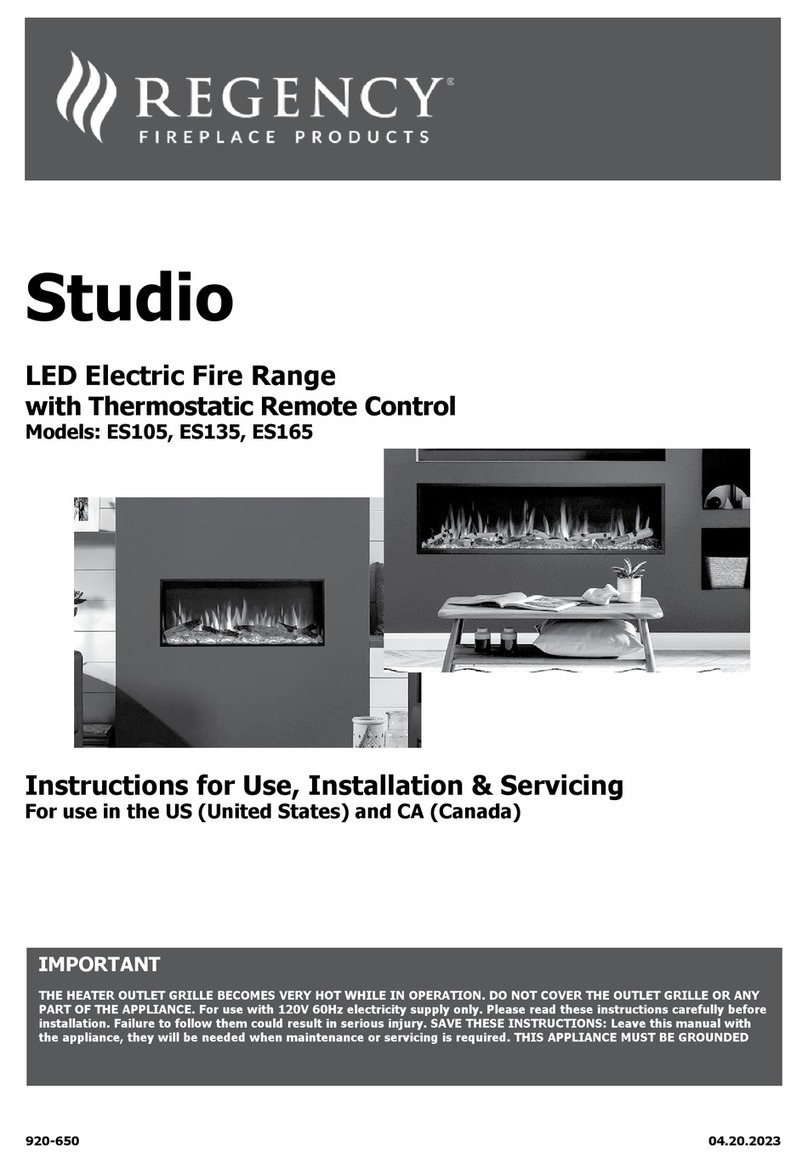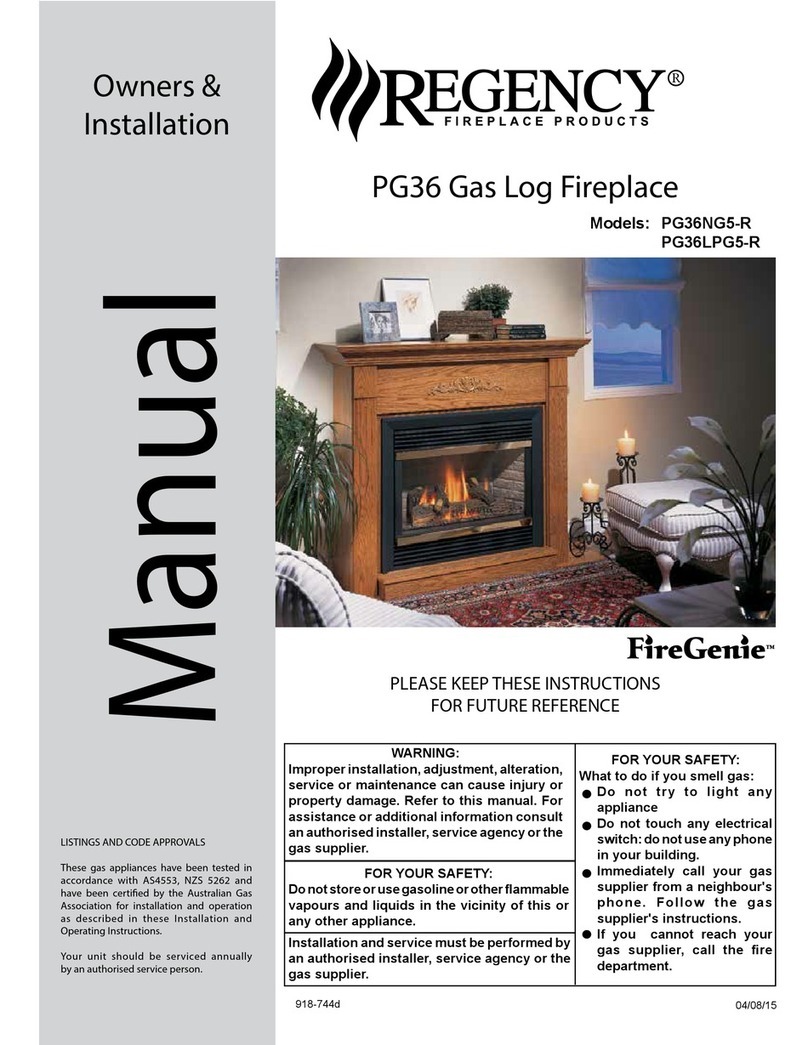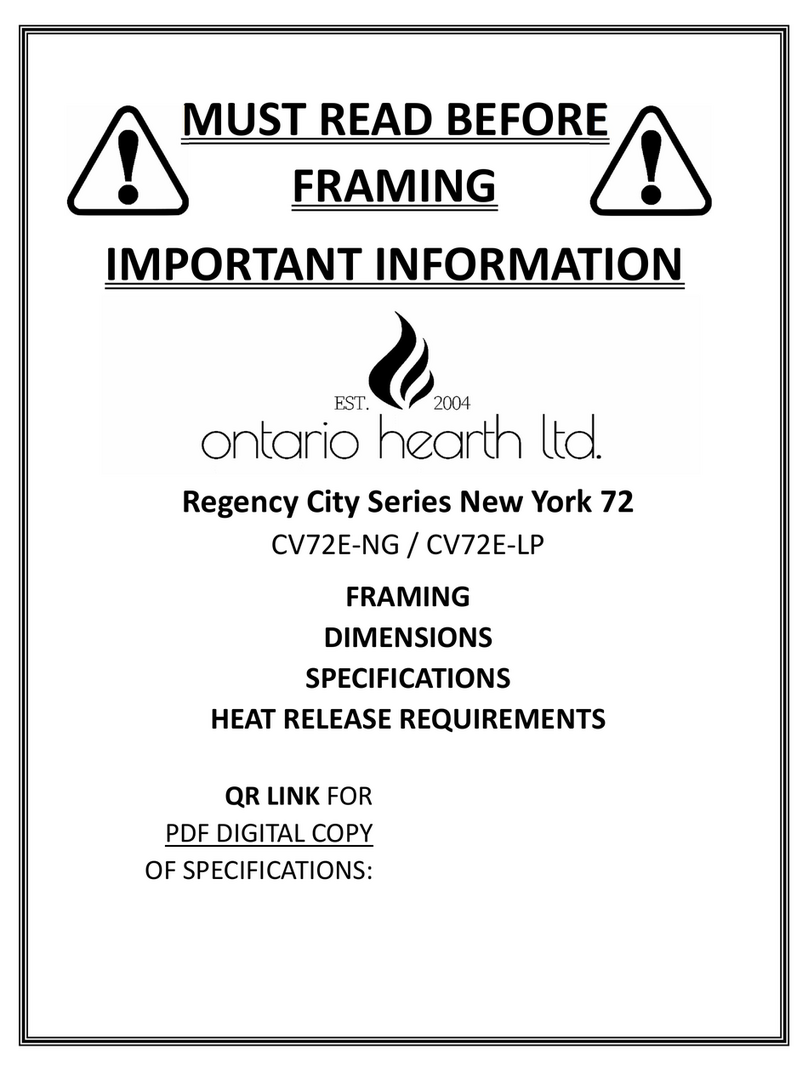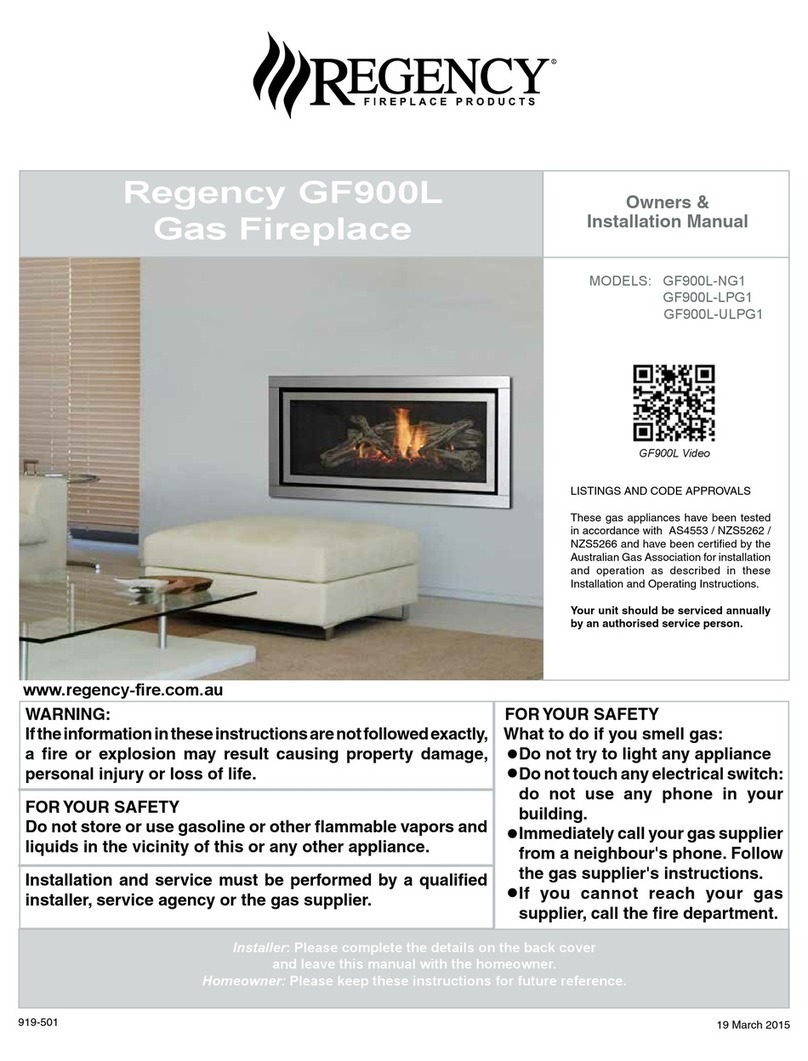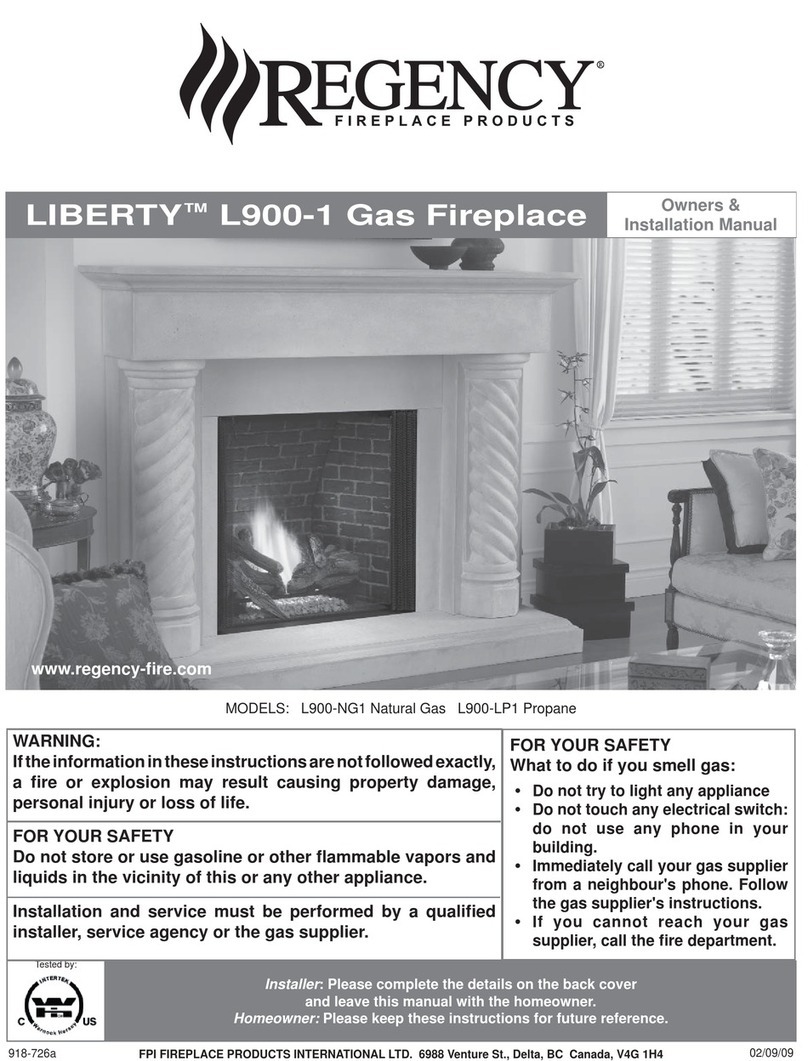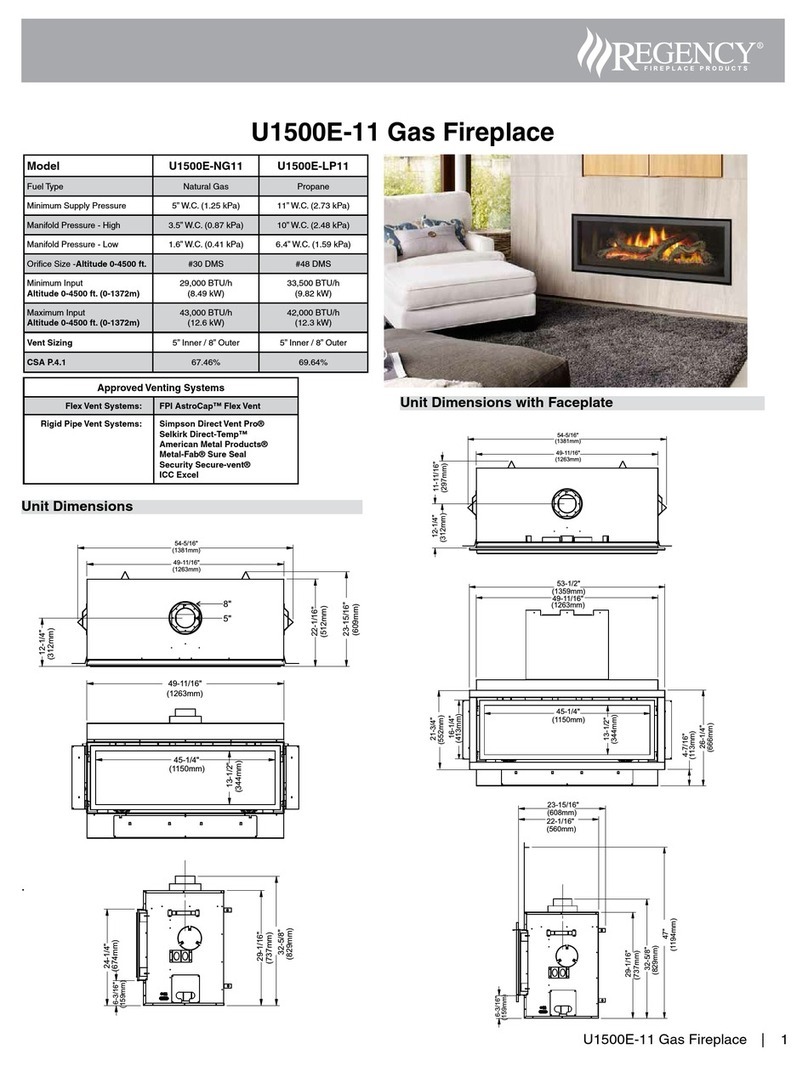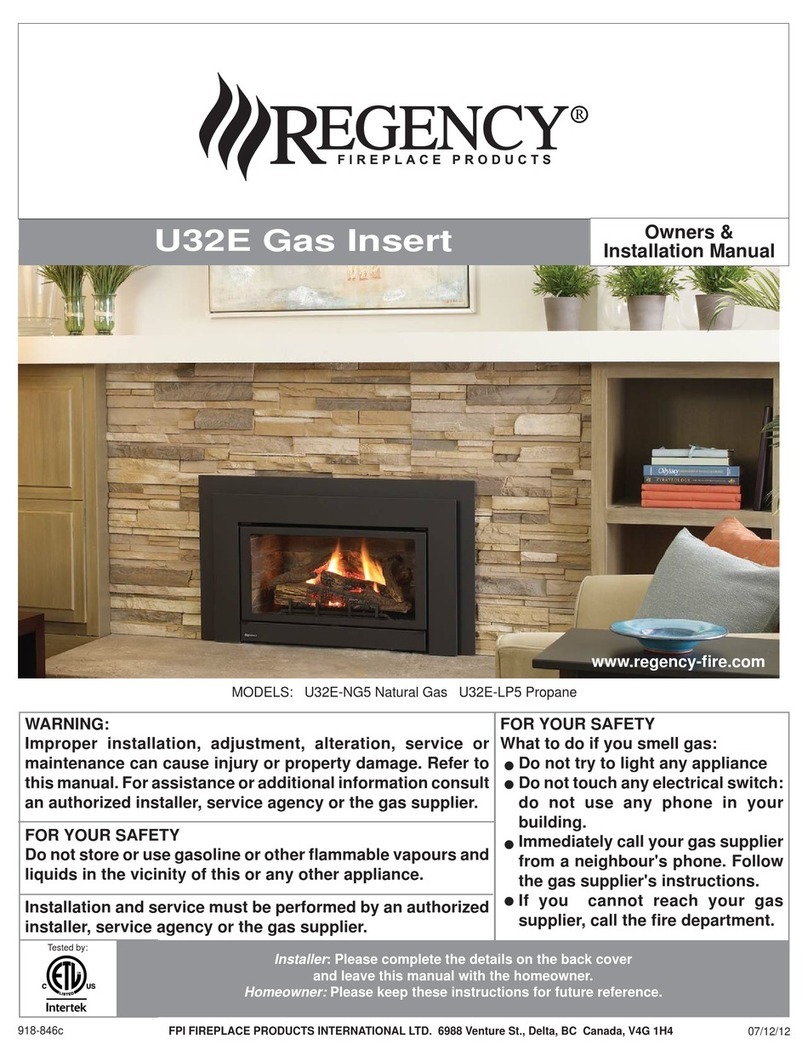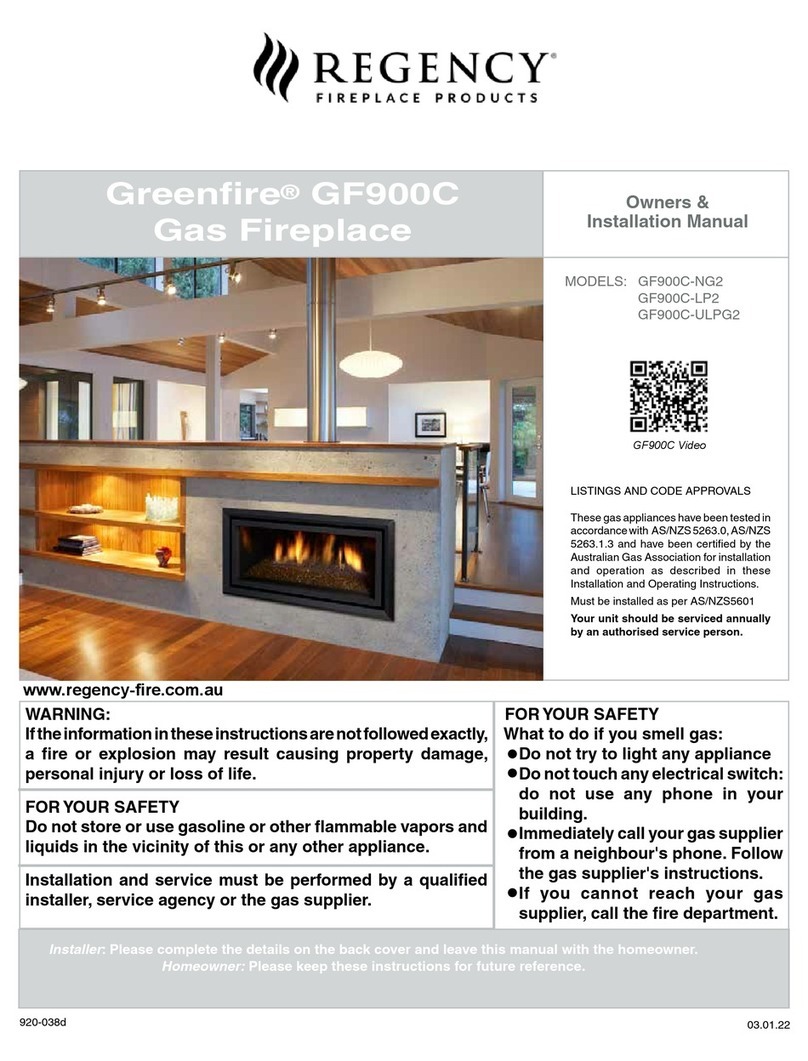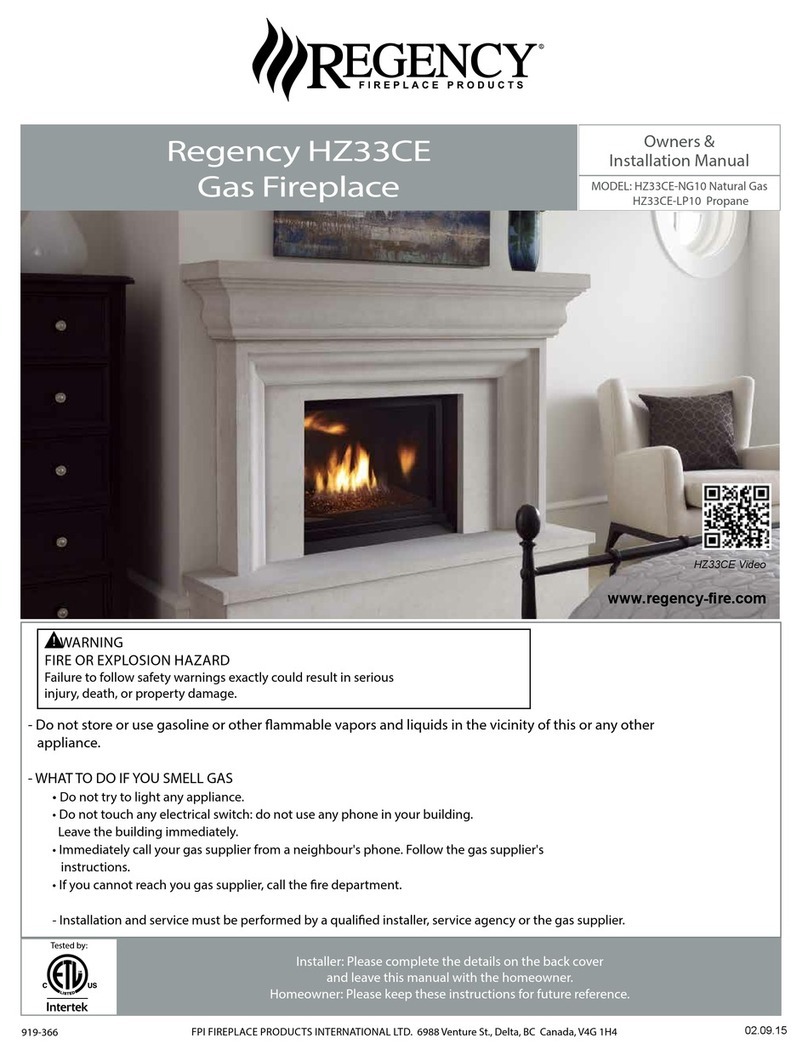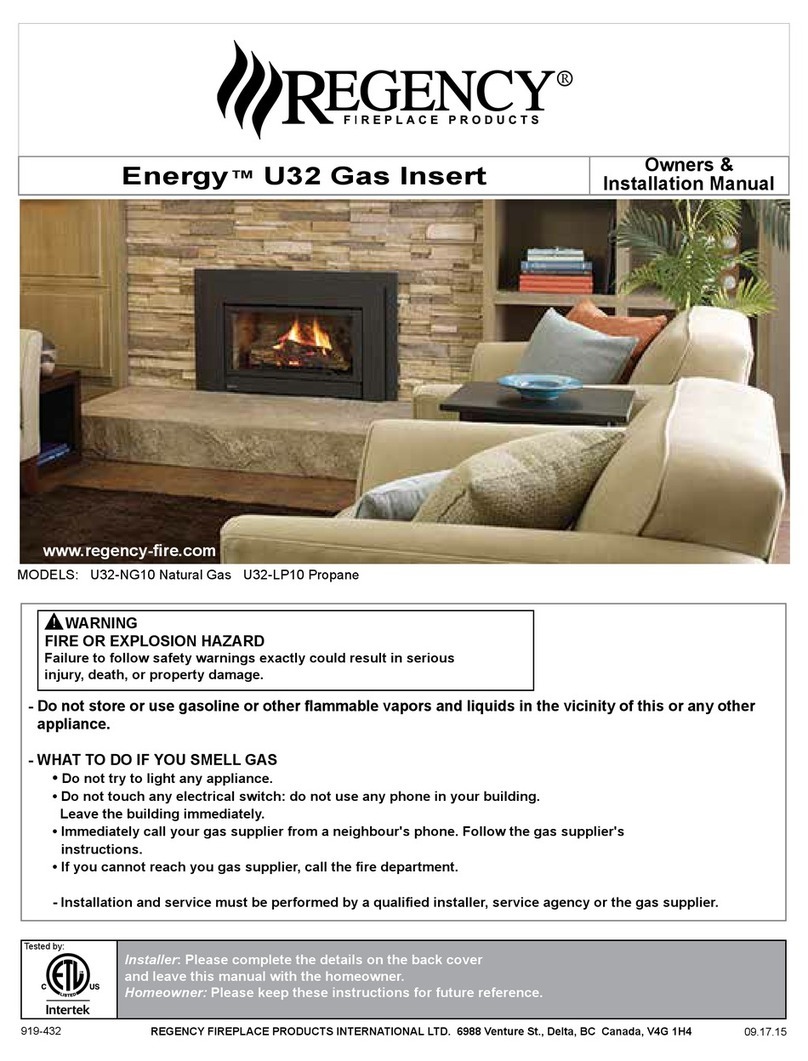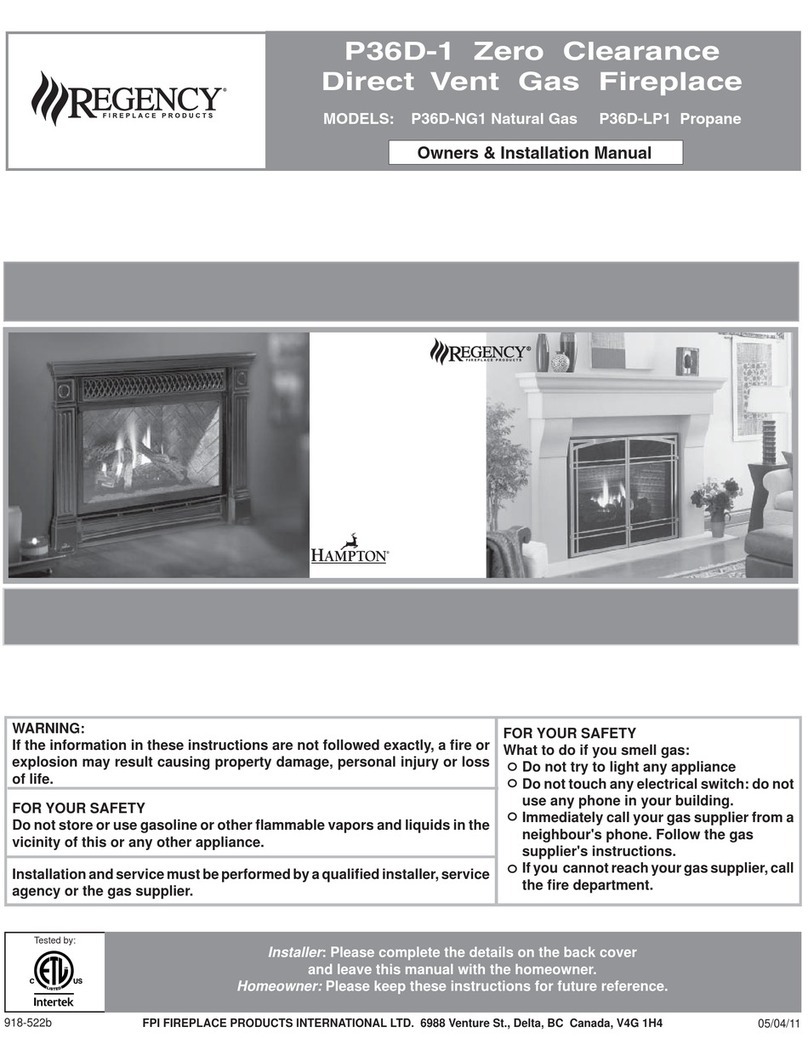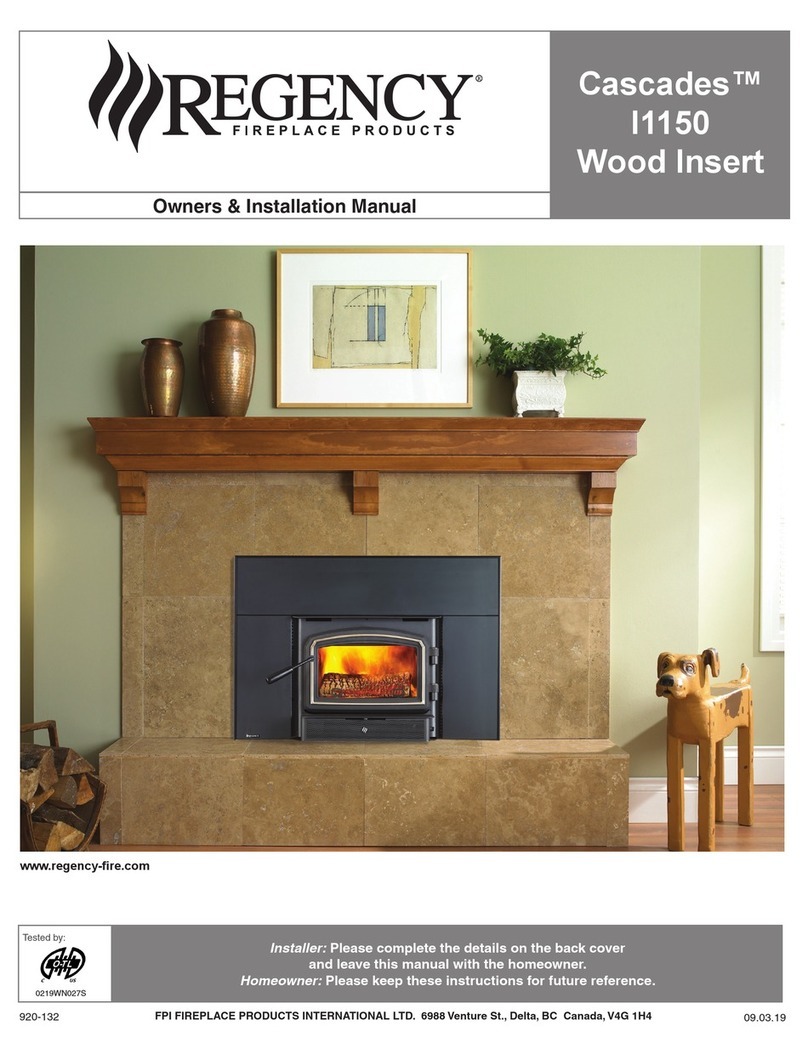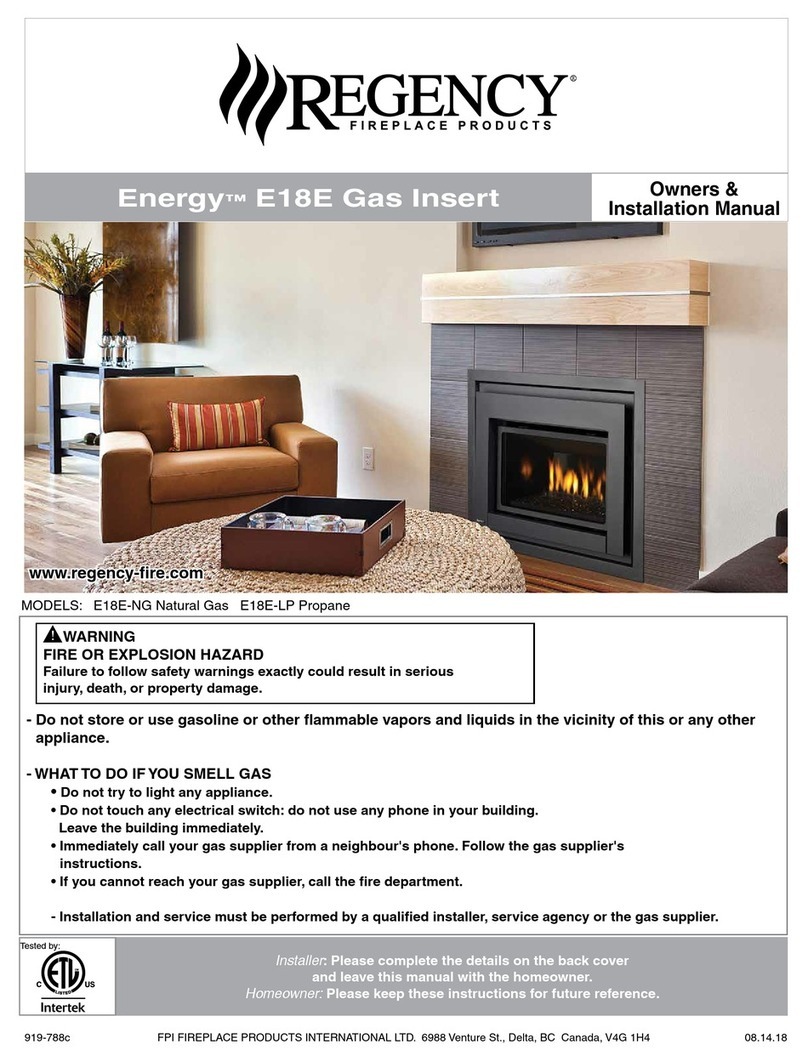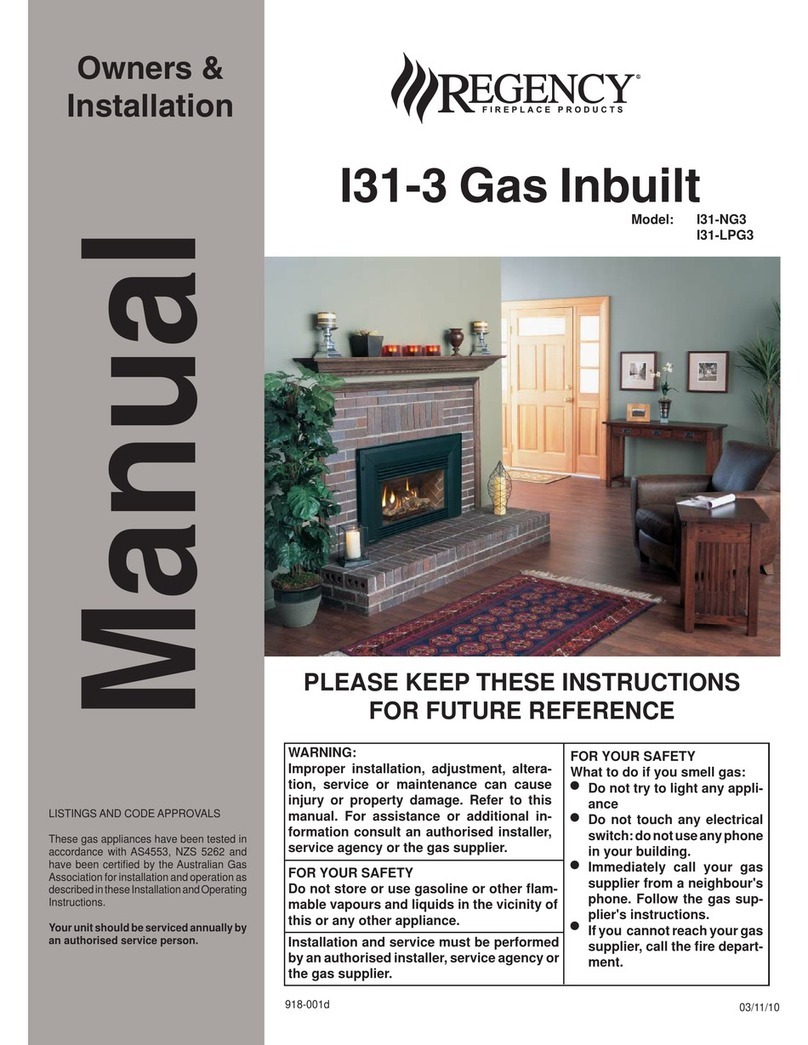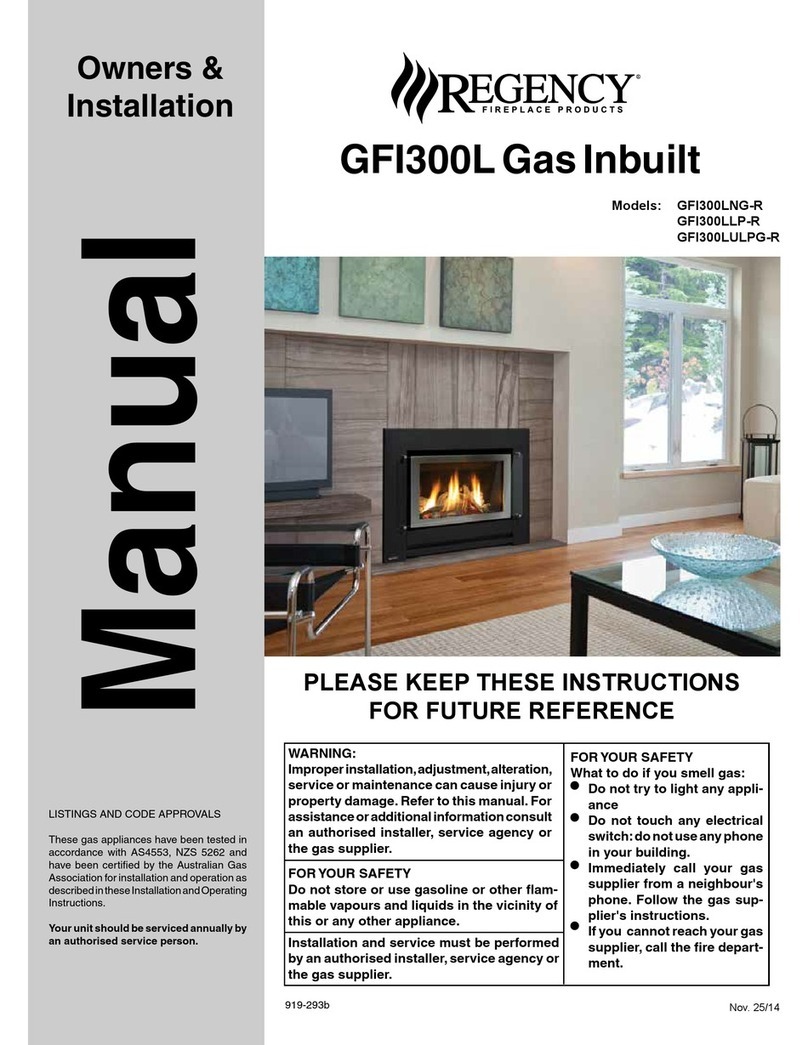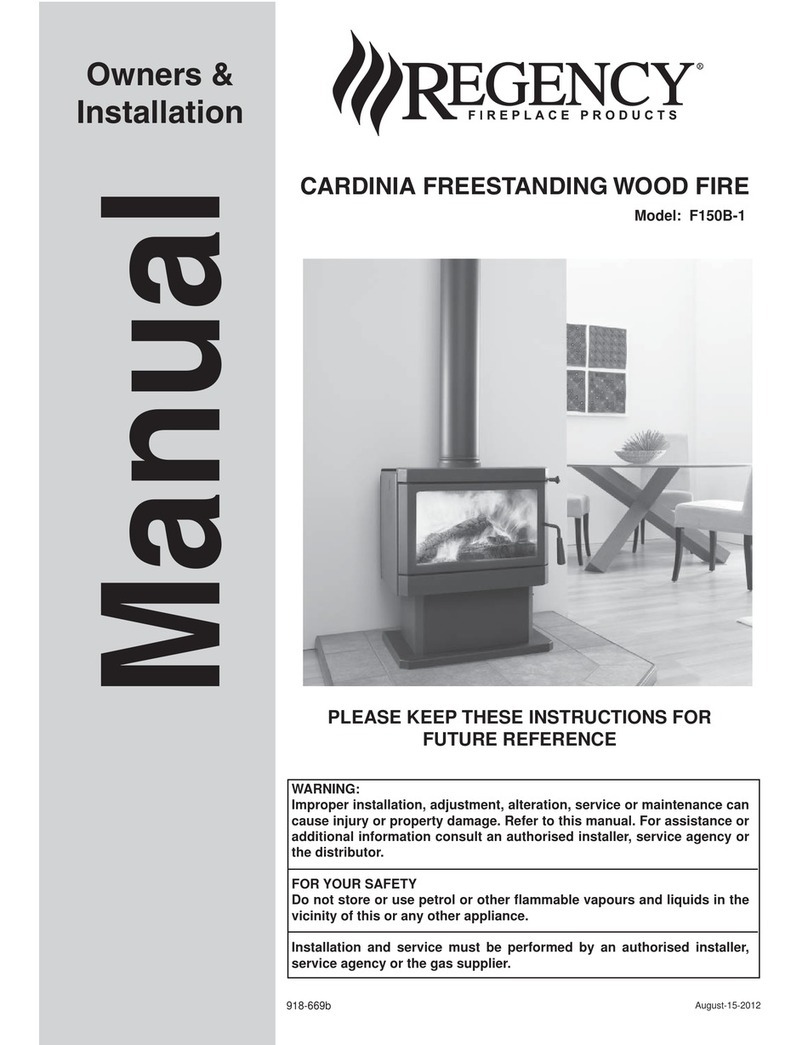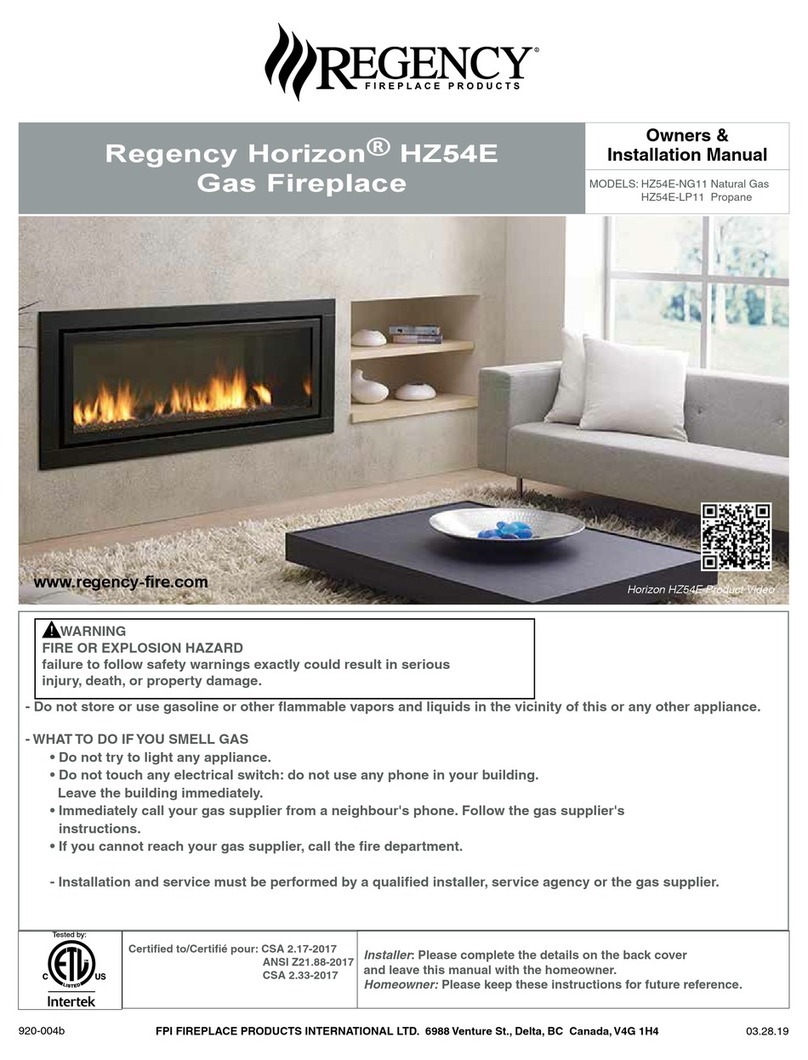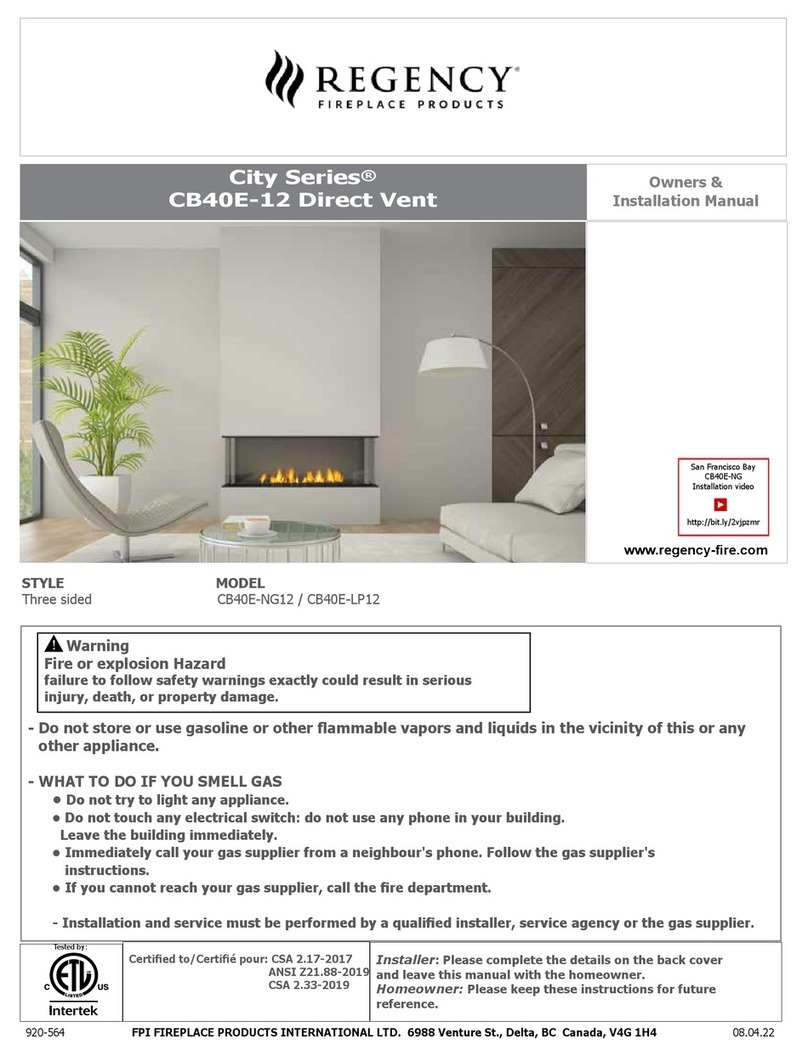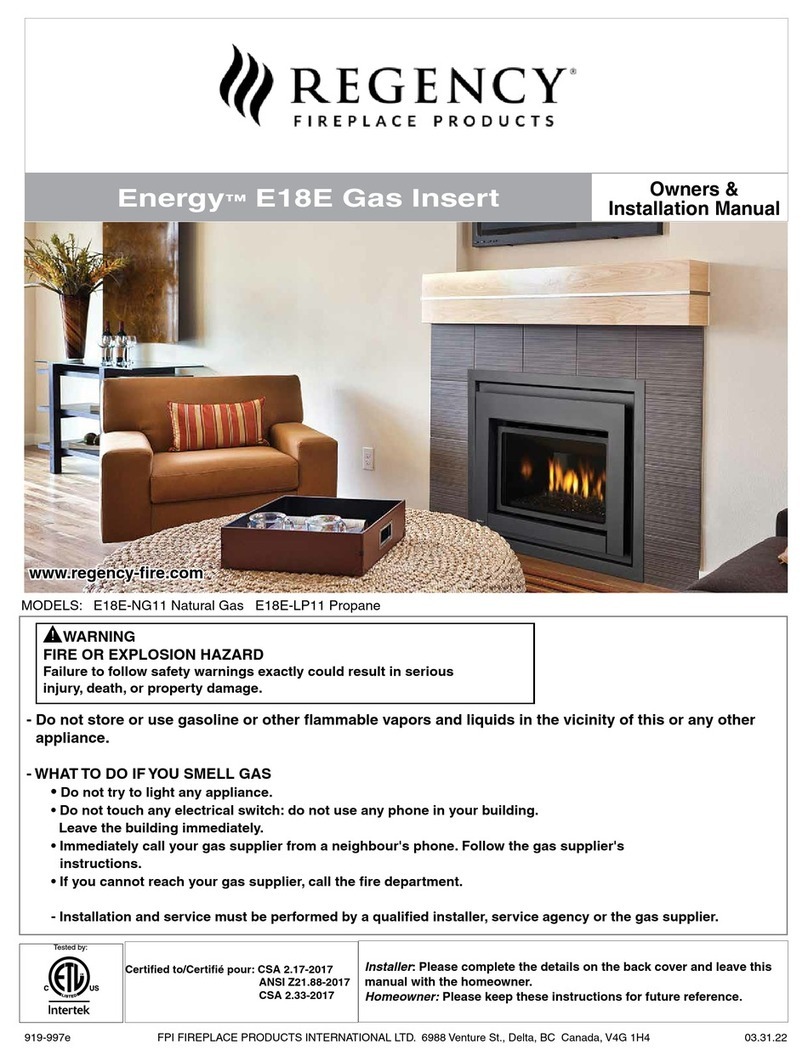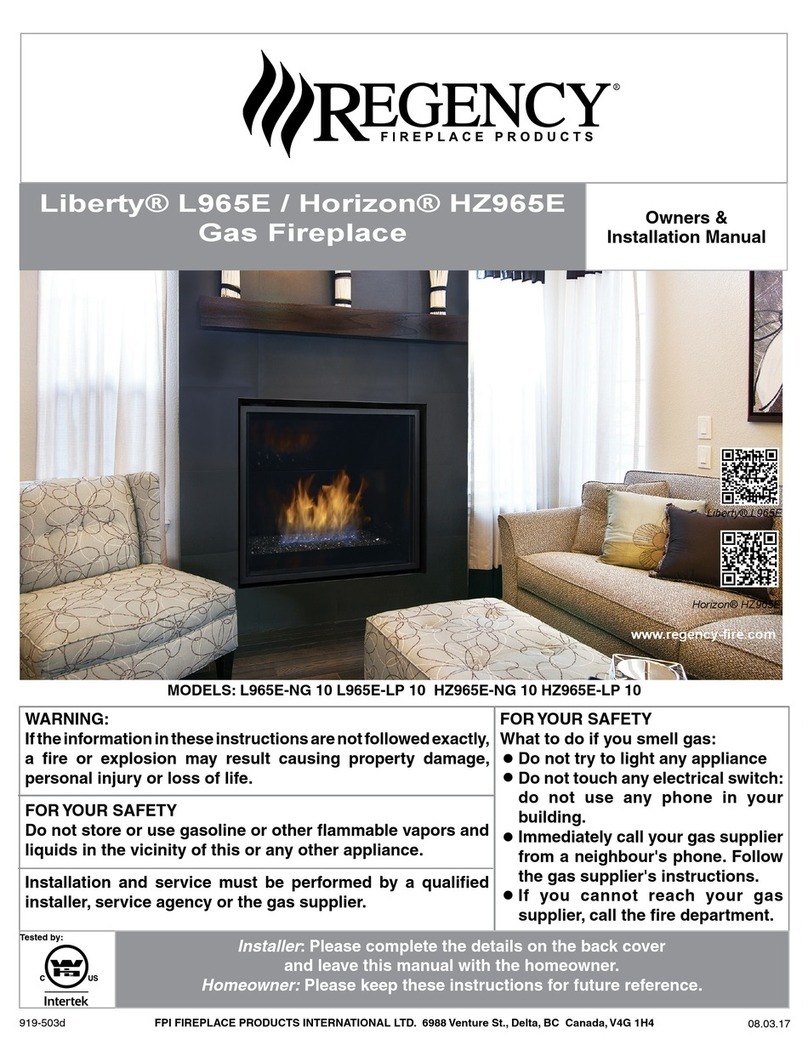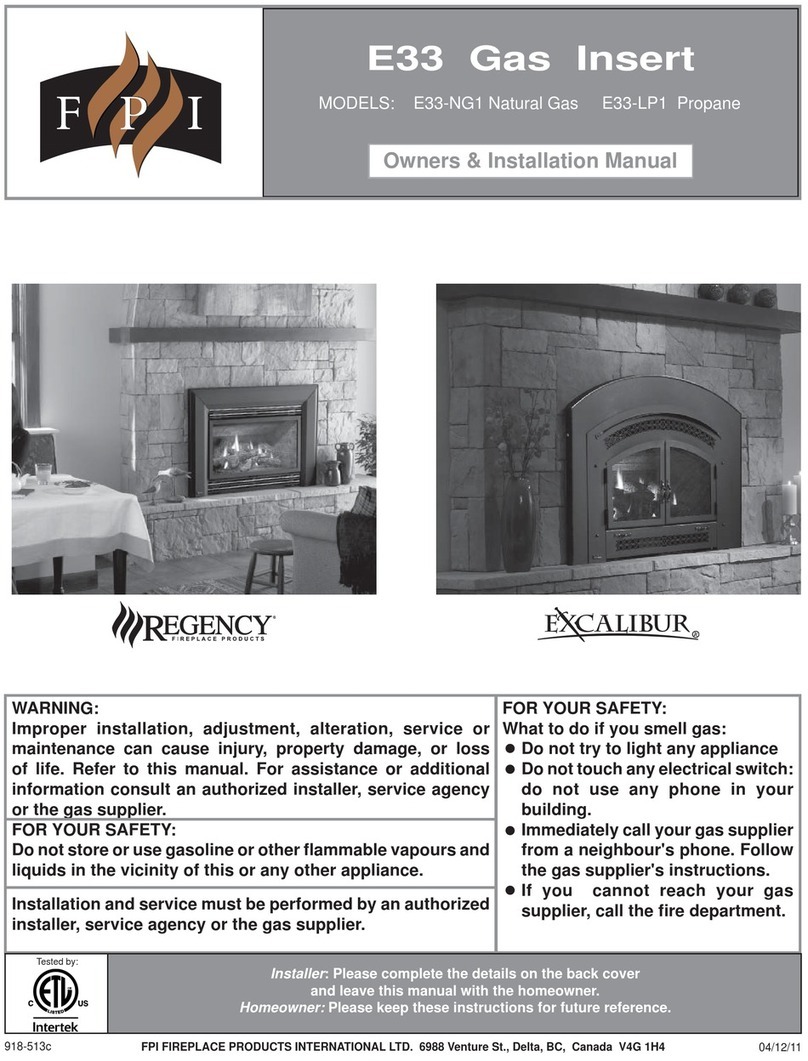
6| F3502B Freestanding Woodre
|
6installation
RESIDENTIAL
INSTALLATION
Failure to install the appliance in con-
junction with the installation guide
and AS/NZS 2918:2001 will void the
warranty.
1) Please read this entire manual before you install
and use your new wood fire. Failure to follow in-
structions may result in property damage, bodily
injury or even death. Be aware that local Codes
and Regulations may override some items in
this manual. Check with your local inspector.
2) Select a position for your Regency Stove. Consult
the minimum clearance chart for your model
and set the stove in place.
3) To insure vertical alignment, suspend a plumb
bob from the ceiling over the exact center of
your stove flue and mark a spot on the ceiling
to indicate the center of the flue.
4) Check that the area above the ceiling is clear
for cutting. Re-confirm the clearance from the
stove to combustibles to insure that they are
within the prescribed limits.
5) This wood fire must be connected to a flue.
6) Install flue according to flue manufacturers
instructions. The performance of your wood
fire is governed to a very large part by the flue
system. Too short a flue can cause difficult
start-up, dirty glass, back smoking when door
is open, and even reduced heat output.
Too tall a flue may prompt excessive draft
which can result in very short burn times
and excessive heat output. The use of an
inexpensive flue pipe damper may be helpful
in reducing excessive draft.
The flue must be listed as suitable for use
with solid fuels. For other types of flues
check with your local building code offi-
cials. Do not confuse a flue with a type “B”
Venting System used for gas appliances
as suitable for a wood burning appliance.
7) Mark the location of the pedestal base or legs
on the floor, then move the stove aside and
mark the position of the floor protector.
8) When the floor protection is complete, position
the stove with the flue collar centered under the
installed flue.
9) In areas with frequent seismic activity, Regency
recommends that your unit is secured to the
floor by using the bolt down holes inside the
pedestal.
10) DO NOT CONNECT THIS UNIT TO A
FLUE SERVING ANOTHER APPLIANCE.
11) Your Regency Wood fire is not to be connected
to any air distribution duct.
CAUTION:
Do not alter or makeshift flue or install.
Install as per Manual.
MODULAR INSTALLATION OPTIONS
WARNING: ONLY USE SPECIFIED COMPONENTS.
The following items are required when assembling your Regency Stove. F3502B unit - the Rear Heat Deflector is supplied with the stove, but if you choose
not to use it you must use the Airmate instead.
Modular Part See the Minimum Clearance to Combustible Materials chart in the Installation section of this manual
F3502B
Airmate OR
Rear Heat Deflector
Convection heat with Airmate vs. Radiant Heat with Rear Heat Deflector. The Airmate pushes heat forward out into
the room, the Rear Heat Deflector deflects the heat upward. Refer to the Installation sections within this manual.
OPTIONS: These can be installed at time of installation or added later:
Blower/Fan Adding the blower will increase the area heated by the stove, it can move warm air beyond the room where the stove
is located.
Ash Drawer Kit Adding the Ash Drawer Kit makes cleaning ashes out of the stove easier and cleaner (refer to Bottom Shield Ash
Drawer Kit, Installation section).
Airmate The Airmate pushes heat forward out into the room.
ROOM AIR - IMPORTANT
For installation using room air for combustion,
remove knockout from the pedestal.
Fresh air is important - if heater is starved for
air caused by exhaust fans or icing, the unit
will not operate properly.
WARNING:THE APPLIANCE AND FLUE-SYS-
TEM SHALL BEINSTALLED IN ACCORDANCE
WITH AS/NZS 2918 ANDTHE APPROPRIATE
REQUIREMENTS OFTHE RELEVANT BUILD-
ING CODE OR CODES.
ANY MODIFICATION OF THE APPLIANCE
THAT HAS NOT BEEN APPROVED IN
WRITING BY THE TESTING AUTHORITY IS
CONSIDERED TO BE IN BREACH OF THE
APPROVAL GRANTED FOR COMPLIANCE
WITH AS/NZS 4013
CAUTION: CRACKED AND BROKEN COMPO-
NENTS, e.g. GLASS PANELS OR CERAMIC
TILES, MAY RENDER THE INSTALLATION
UNSAFE.
CAUTION: MIXING OF APPLIANCE OR FLUE-
SYSTEM COMPONENTS FROM DIFFERENT
SOURCES OR, MODIFYING THE DIMEN-
SIONAL SPECIFICATION OF COMPONENTS
MAY RESULT IN HAZARDOUS CONDITIONS.
WHERE SUCH ACTION IS CONSIDERED,THE
MANUFACTURER SHOULD BE CONSULTED
IN THE FIRST INSTANCE.
WARNING: APPLIANCES INSTALLED IN AC-
CORDANCE WITH THIS STANDARD SHALL
COMPLY WITH THE REQUIREMENTS OF OF
AS/NZS 4013 WHERE REQUIREDBYTHE REGU-
LATORY AUTHORITY, I.E. THE APPLIANCE
SHALL BE IDENTIFIABLE BY A COMPLIANCE
PLATE WITHTHE MARKING 'TESTED TO AS/
NZS 4013'
